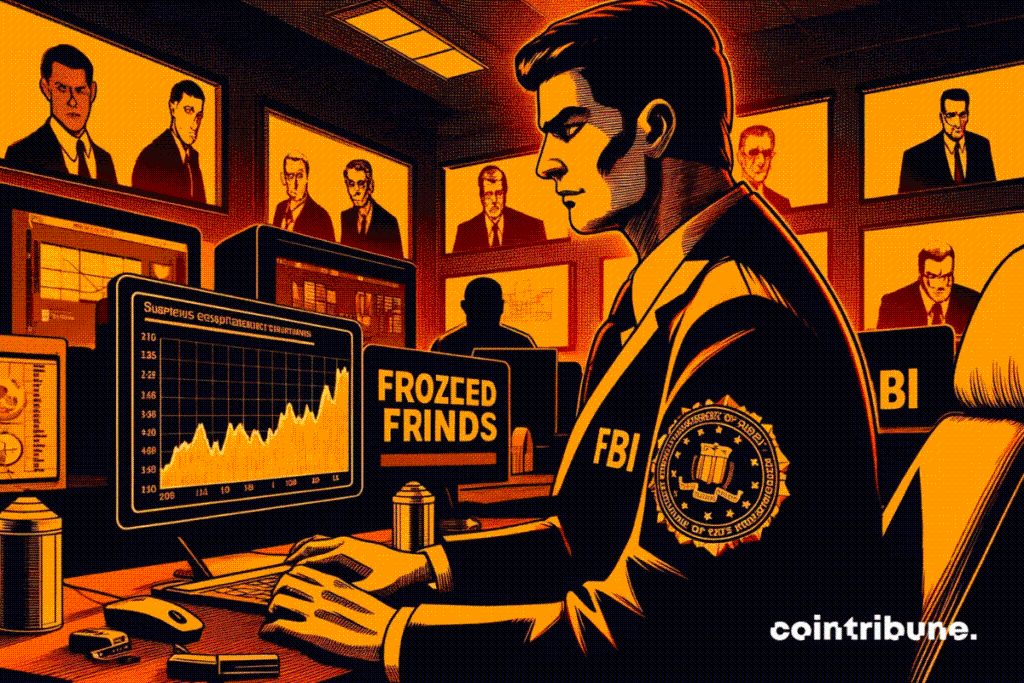The United States Seizes $200,000 In Crypto Linked To Hamas.
The blockchain, often perceived as a shadowy area conducive to illicit activities, has just shown its other face: an unrelenting traceability. In March 2024, the U.S. Department of Justice announced the seizure of $201,400 in crypto linked to Hamas. Behind this spectacular move lie issues much broader than the mere confiscation of assets. Between increased regulation and myths to dismantle, this case raises crucial questions about the future of terrorist financing in the digital age.

A digital hunt: how authorities dismantled the network
Contrary to popular belief, it is the inherent transparency of blockchain that enabled this seizure. The crypto wallets used by Hamas — at least 17 identified — left indelible traces.
Transactions, although fragmented through exchanges and over-the-counter brokers, formed a retraceable mosaic. “The collection addresses were scattered but interconnected,” the DOJ statement specifies. An irony: the technology criticized for its relative anonymity served here as a guiding thread.
The case takes on a geopolitical turn with the involvement of Binance. Already under fire for its shortcomings in anti-money laundering efforts, the platform is accused of having facilitated, even indirectly, these financial flows.
In January 2024, families of victims filed a lawsuit against the exchange, highlighting a paradox: how could a giant of the industry be oblivious to transactions linked to sanctioned entities? The answer may lie in the flaws of a system still maturing.
Money laundering 2.0: a limited effectiveness
If $1.5 million had been laundered since October 2023, these figures mask a less media-friendly reality.
Traditional methods — hawala transfers, physical cash — remain dominant in terrorism. Crypto, on the other hand, imposes high risks: each transaction is a footprint.
A Chainalysis report (2023) confirms this: less than 1% of illegal activities related to crypto concern terrorist financing. Evidence that armed groups still prefer the opacity of classic channels.
This spectacular seizure thus reignites an old debate: should we overregulate a tool marginally used by terrorists, risking stifling innovation?
Crypto regulation: between paranoia and pragmatism
Since 2019, Hamas has reportedly been testing donations in crypto. However, the Congressional Research Service (December 2024) highlights the lack of evidence regarding “the scale and effectiveness” of these campaigns.
So why this legislative zeal? Some see it as a strategy to justify increased control over a sector perceived as ungovernable.
However, the tools already exist: the OFAC regularly sanctions suspicious addresses, as in January 2024 with the United Kingdom and Australia.
The settlement of $4.3 billion with the DOJ in November 2023 shows that authorities know how to hit hard. But is that enough? The lawsuits against Changpeng Zhao, former CEO of Binance, reveal a desire to establish a legal precedent. Nonetheless, criminalizing platforms for the actions of their users raises an ethical question: how far should we hold technical intermediaries accountable?
Rather than over-transposing banking laws, shouldn’t we adapt regulation to the specificities of blockchain? The traceability of digital assets offers a unique opportunity to monitor flows without stifling the industry.
Stablecoins, for example, could be framed via real-time verification protocols. A much more promising avenue than blunt prohibitions, often circumvented.
The seizure of $200,000 in crypto linked to Hamas is less an admission of weakness than a demonstration of technological strength.
It reminds us that blockchain, far from being a sanctuary for criminals, is a double-edged tool. As the United States sharpens its legal weapons, the challenge will be to avoid a counterproductive security reflex. Because regulating without understanding risks stifling innovation to chase ghosts. Furthermore, discover Saylor’s secret plan for the USA .
Disclaimer: The content of this article solely reflects the author's opinion and does not represent the platform in any capacity. This article is not intended to serve as a reference for making investment decisions.
You may also like
ETH 10th anniversary—Bitget community carnival
[Initial Listing] Bitget Will List NERO Chain (NERO). Come and grab a share of 65,000,000 NERO
Notice: VND deposit service Back to Normal
[Initial Listing] Bitget Will List DePHY (PHY). Come and grab a share of 6,600,000 PHY
